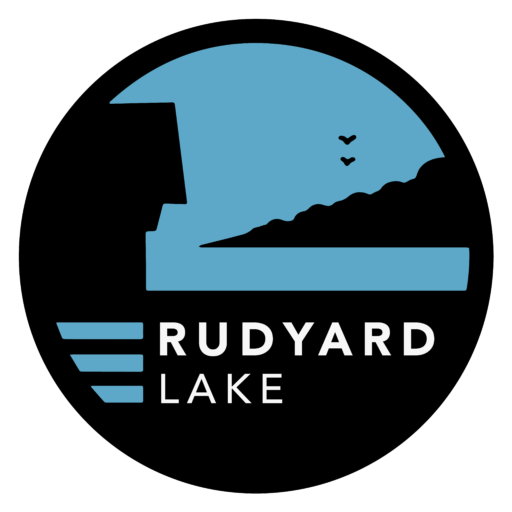
Canals
Rudyard reservoir was the fourth reservoir constructed by the Trent and Mersey Canal Company to provide water at the summit of the Caldon branch of the Trent and Mersey canal.
Construction of the dam was started in 1797 with John Rennie as consultant and was completed in 1800. A branch canal to Leek from the existing Caldon canal was completed in 1801 with its feeder from Rudyard providing the much needed water supply.
Initially, springs provided the supply of water to to the reservoir but these proved insufficient and a feeder to the reservoir from the river Dane via a weir was built in 1809. This weir had to be lowered in 1823 in order to increase the supply to the canal to cater for the extensions to the canal system which were requiring ever more water.
The view above shows the feeder to the Lake as it was but today the feeder is almost completely silted up leaving streams again as the only water supplies to the lake. With the canals mainly used for pleasure activities, the reduced inflow is currently sufficient under normal circumstances.
“A house was provided (Feeder Cottage) and we understand that his wife & family provided refreshments to passing tourists”…
The Canal Company employed a full time feeder bailiff whose primary job was to keep the feeder channel clear of obstructions & silt and also to control the flow of water from the River Dane in to the reservoir. A house was provided (Feeder Cottage) and we understand that his wife & family provided refreshments to passing tourists.
Today we are told that the Canal System is as busy as it was at the height of the Industrial Revolution but these days of course its largely pleasure boaters & not goods using the waterways, it is controlled by The Canal & River Trust, formally British Waterways; see www.canalrivertrust.org.uk.
The reservoir has lost a considerable amount of its water capacity over it 200 years due to silt being deposited from the ingress of the various water courses, in the early 1900’s there was a part time dredger on the Lake which removed silt build up but today with Health & Safety issues this is apparently no longer possible.
The Canal & River Trust was created because of difficulties faced by the charity’s predecessor, the government-owned British Waterways. As a statutory corporation, British Waterways was subject to grant cuts and short-termism from government and received few grants from charitable sources. As a result by 2009 British Waterways had a budget deficit of £30m and sought a solution. They were seeking a larger, more secure income while creating a greater role for volunteers and the waterway community.
A new charitable trust would fulfil this role: new income would be found through donations, grants and a fixed grant from the government, the waterways would be underwritten by a substantial property endowment, while volunteers and donors would be more inclined towards a charity than a government quango.
As a result British Waterways began to look at a change to a charitable trust, a plan which gained momentum when, in the March 2010 Budget, the government announced that BW would become a mutual organisation, and later in September when BW was listed on a leaked list of Quangos to be abolished stating “Abolish as [a non-departmental public body] and mutualise”. BW’s fate was confirmed the following month by British Waterways.
In October 2011, British Waterways announced the new name and logo for the charity that would succeed its operations in England and Wales – Canal & River Trust for England and Glandwr Cymru (Waterside Wales) for Wales.
The trust received charitable status in April and received parliamentary approval in June. The change was originally set for 1 April 2012 but was later put back into June before the final date was chosen.
On 2 July all of British Waterways’ assets and responsibilities in England and Wales were transferred to the Canal & River Trust, which officially launched on 12 July.
In Scotland British Waterways continues to operate as a standalone public corporation under the trading name Scottish Canals.
Later that year, the Canal & River Trust merged with the England and Wales operations of The Waterways Trust, a charity previously affiliated to British Waterways, to avoid confusion and as both charities have similar aims.










